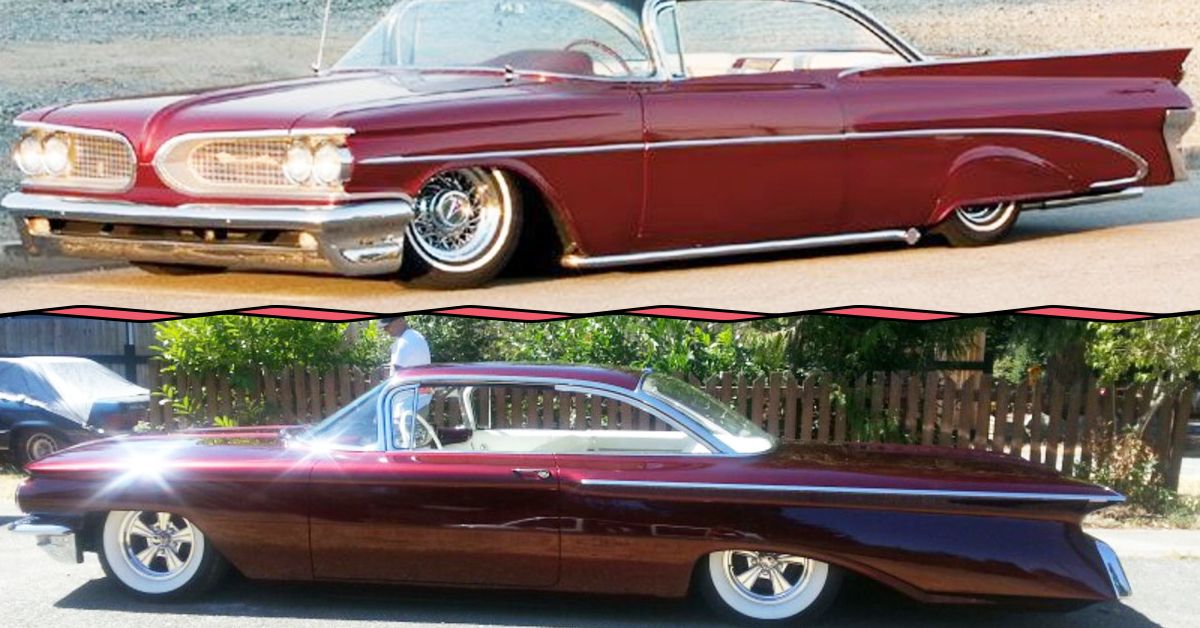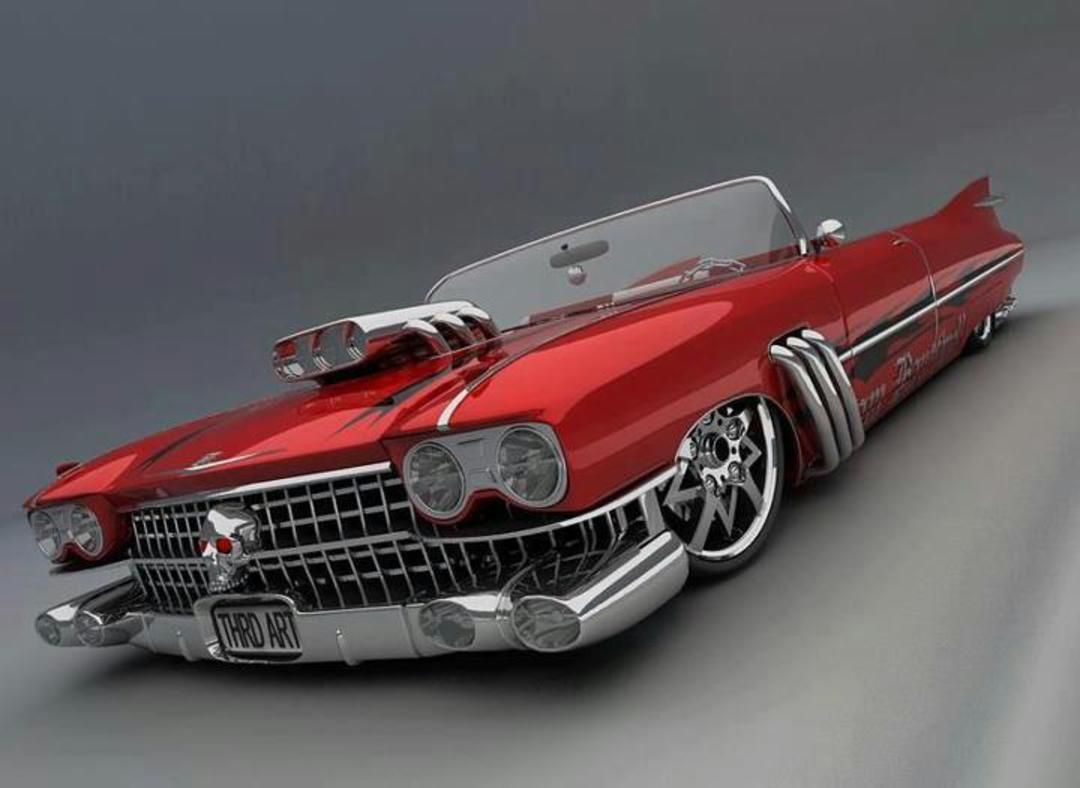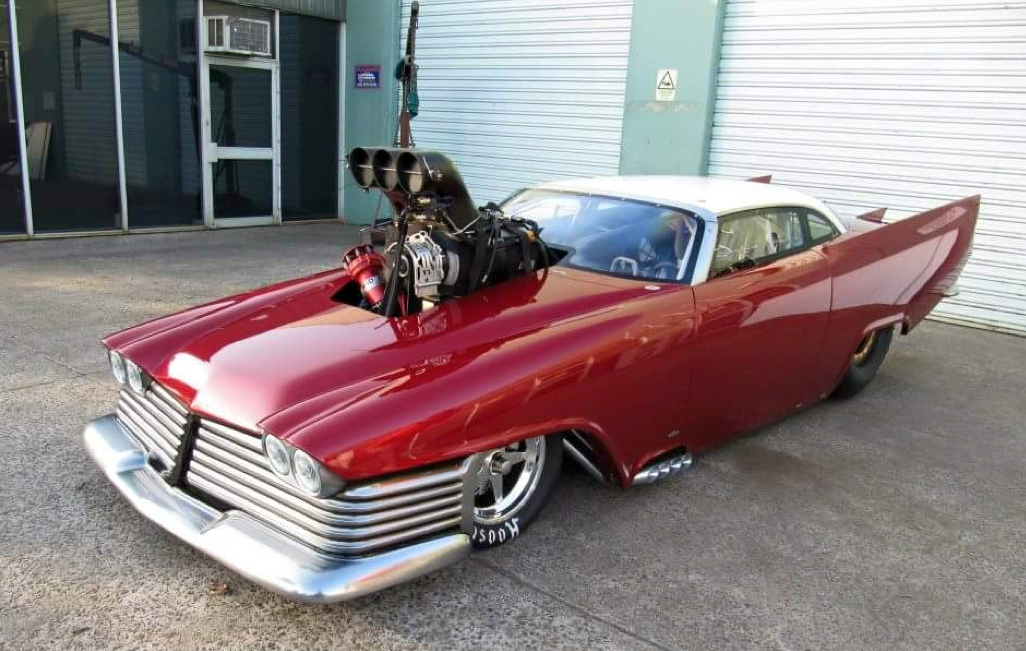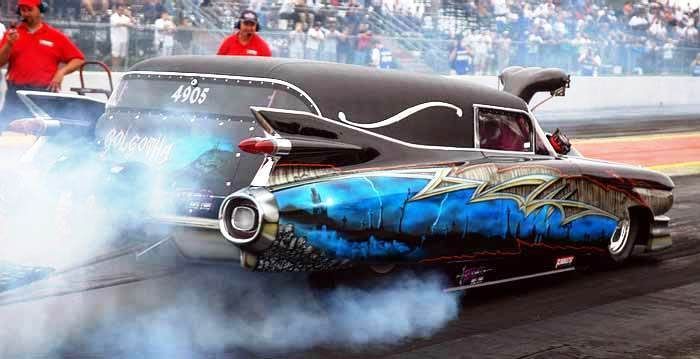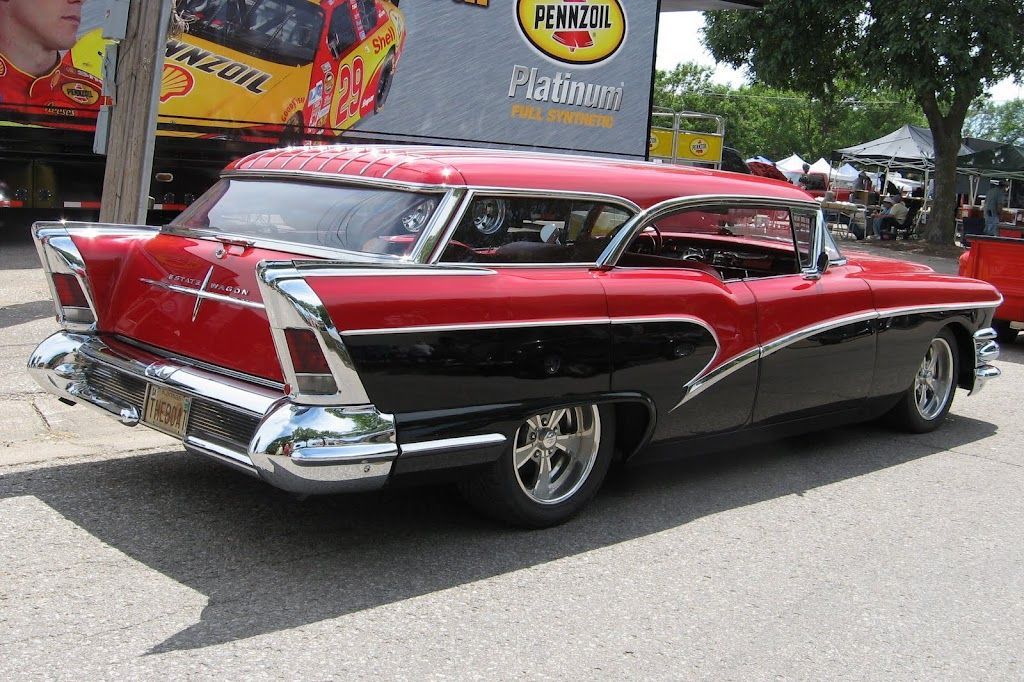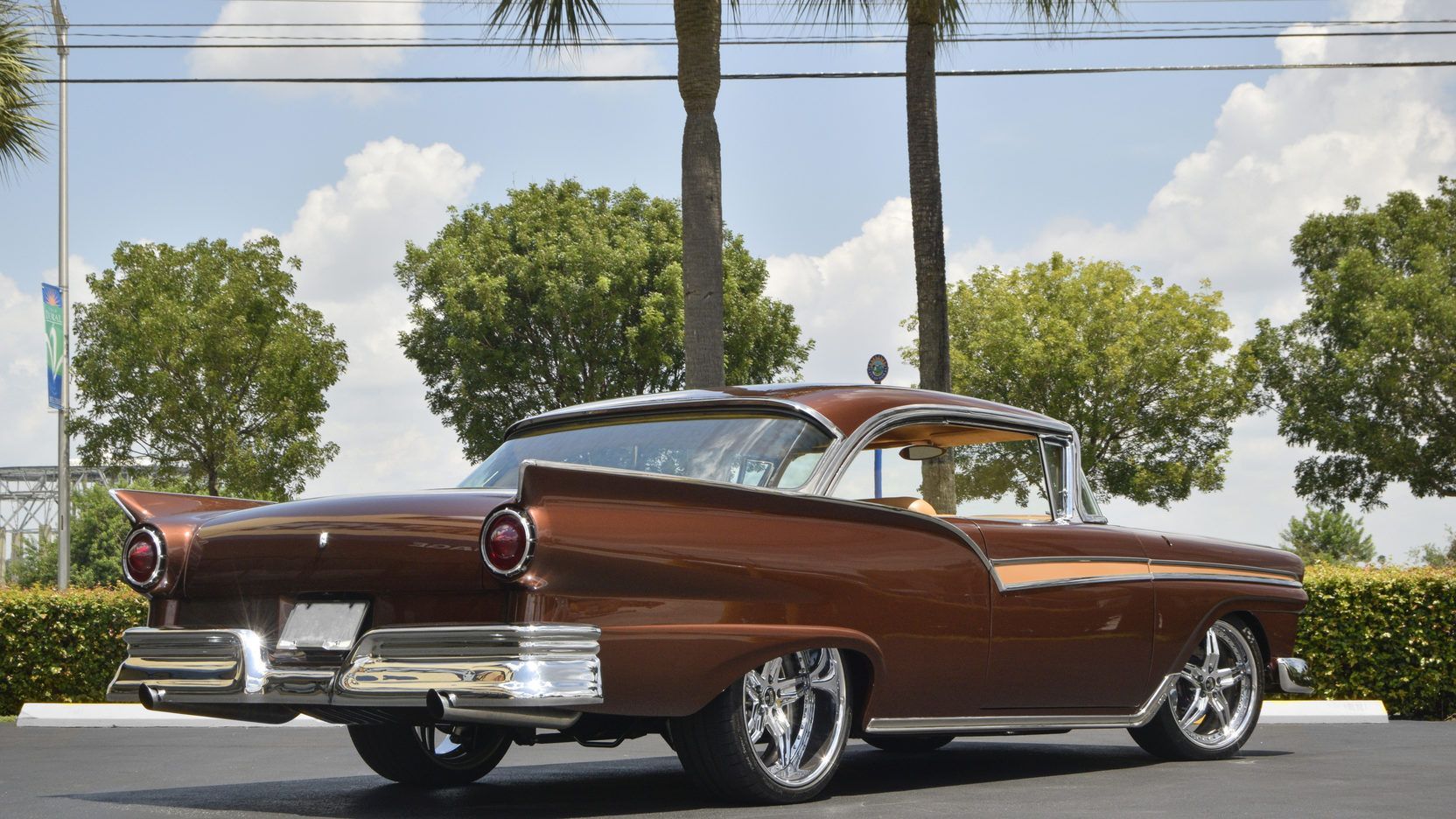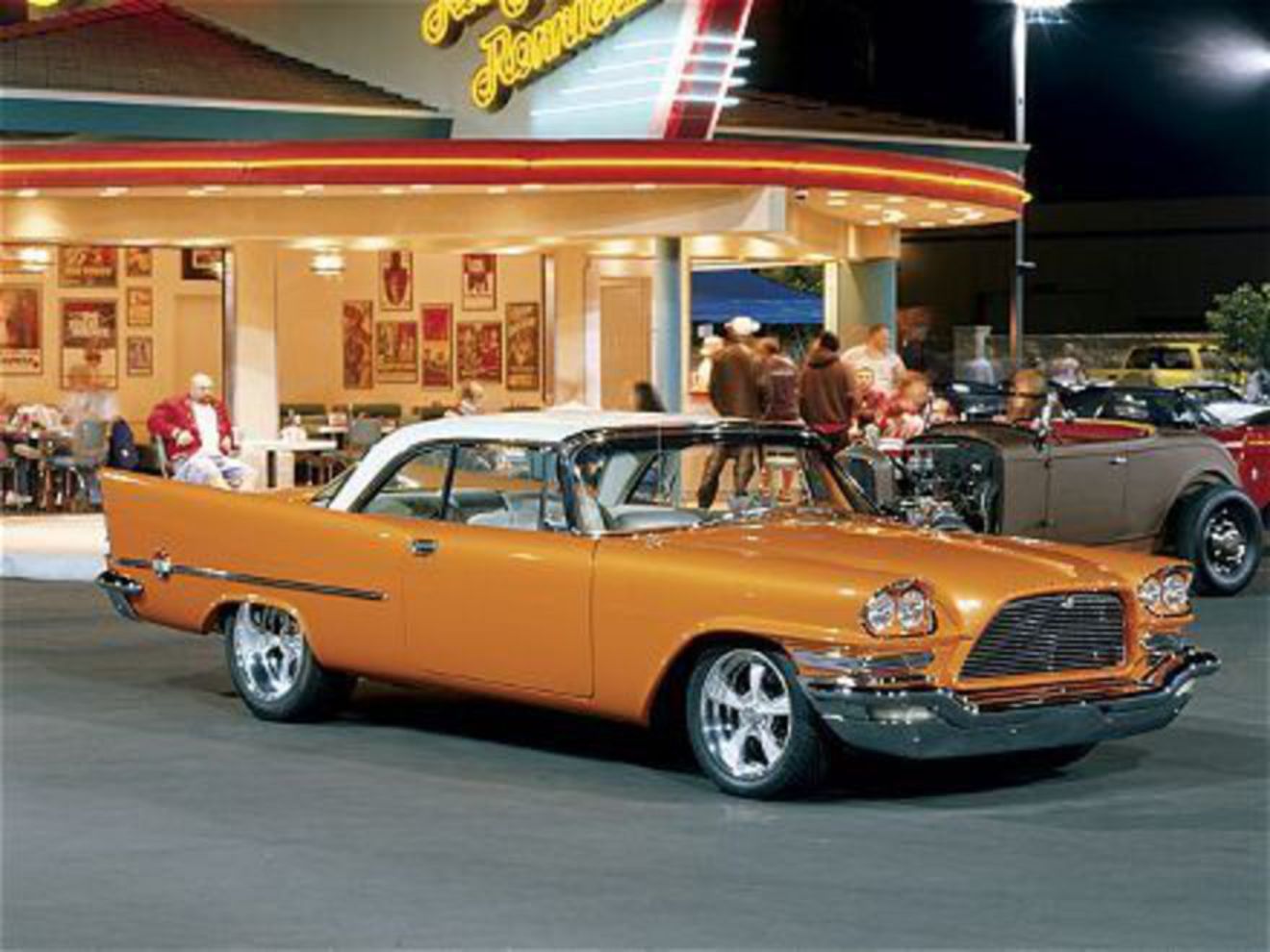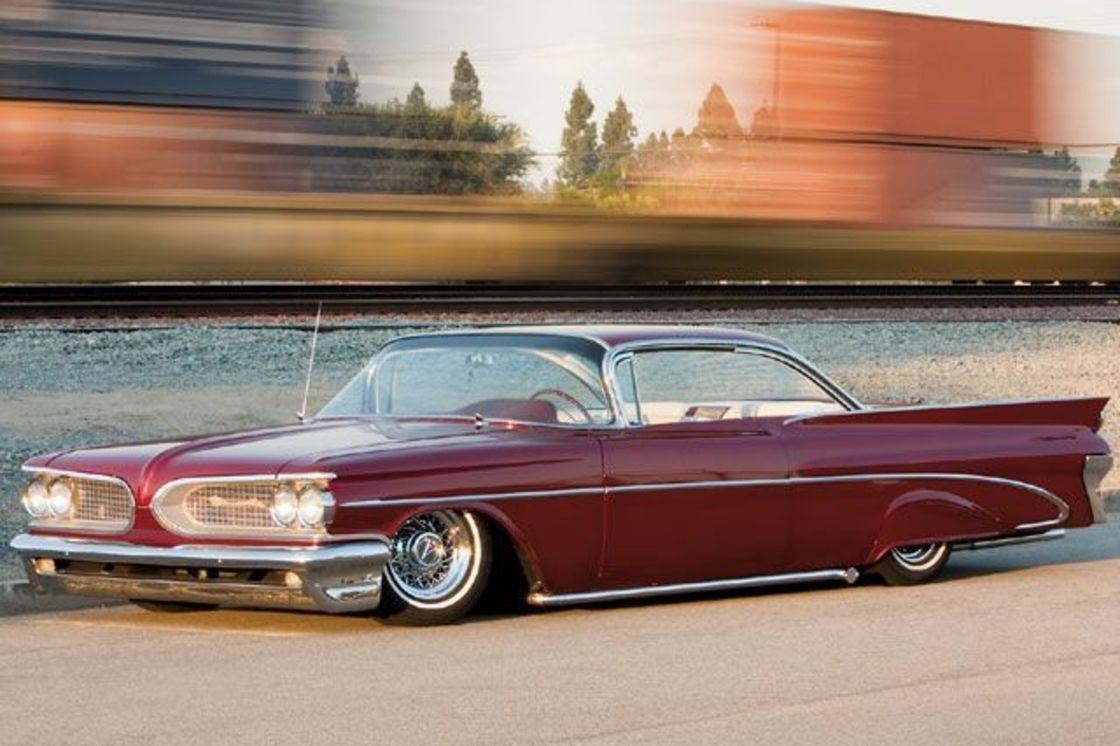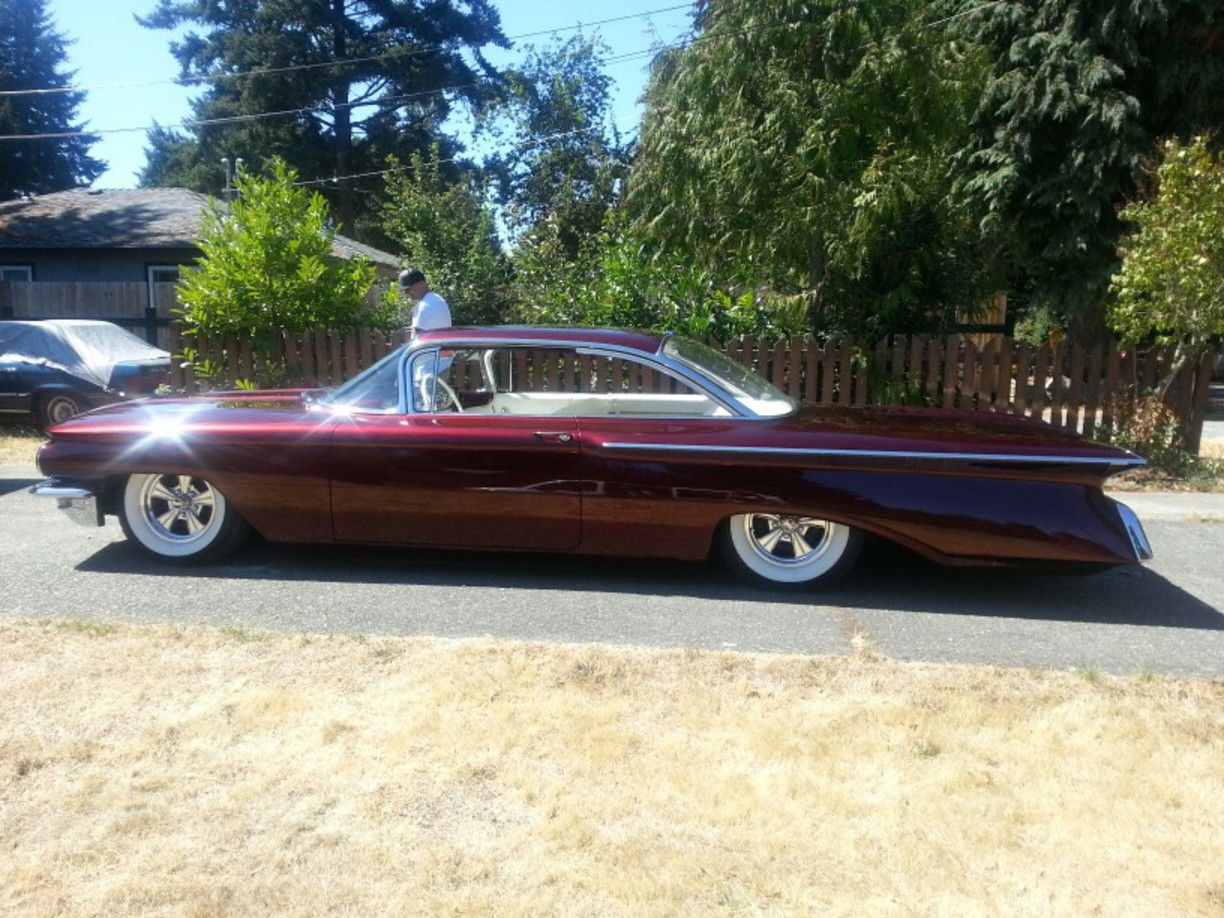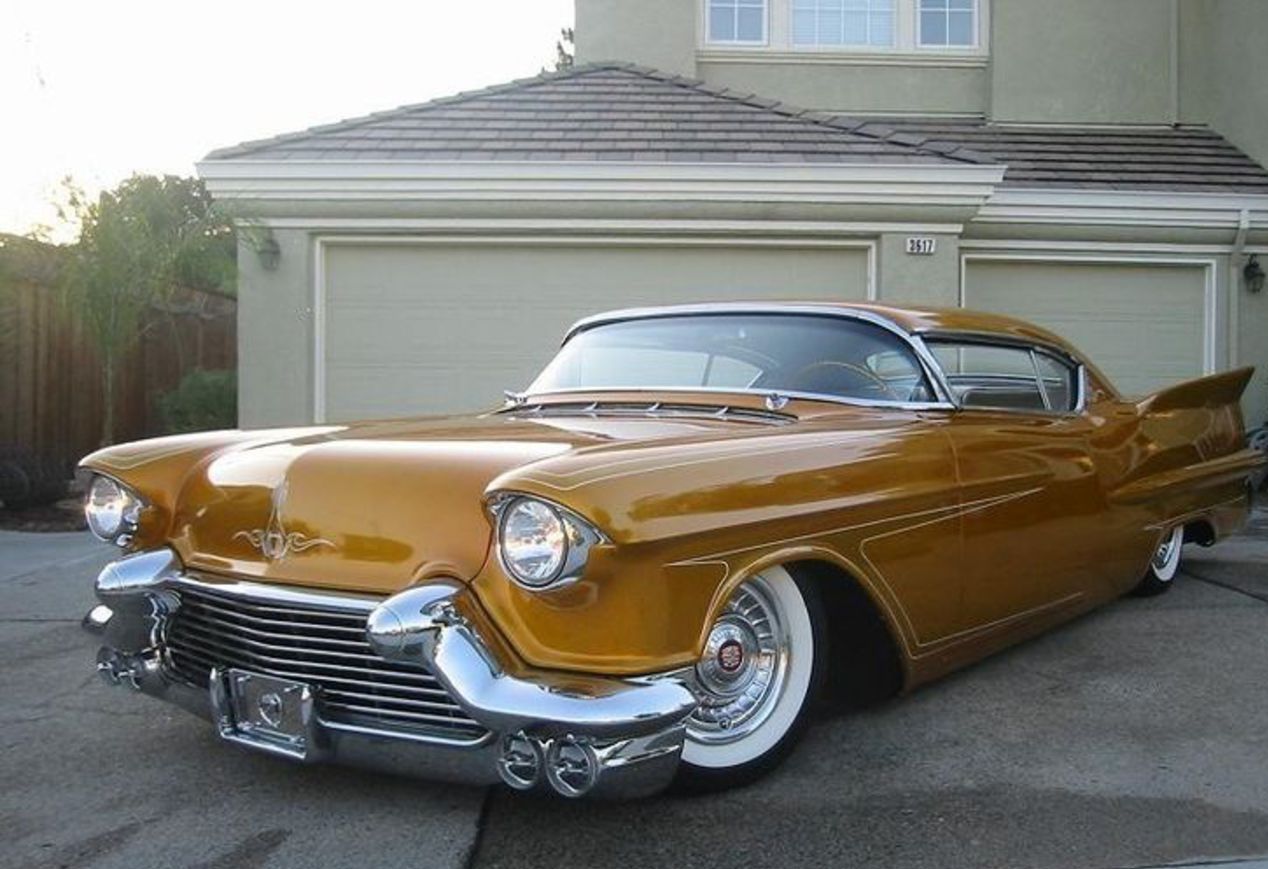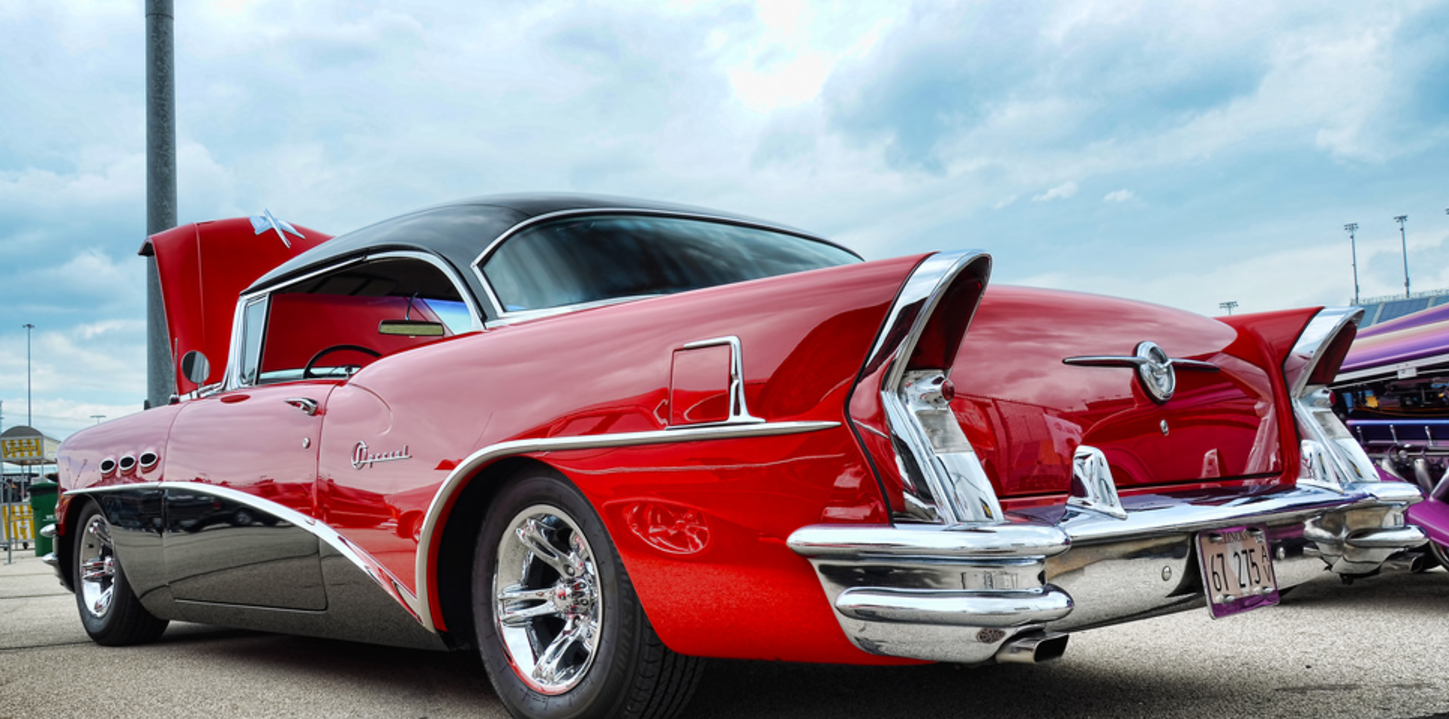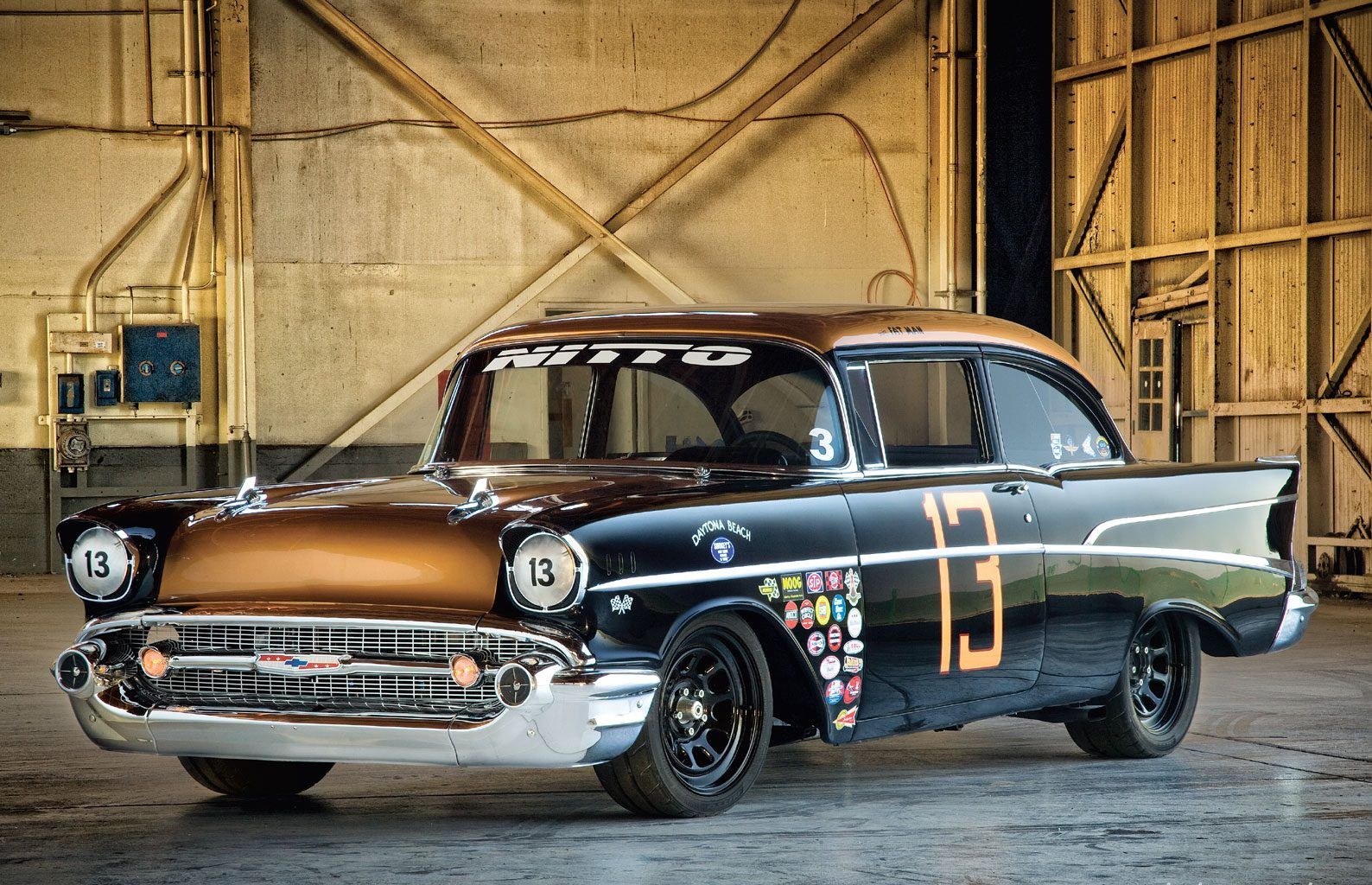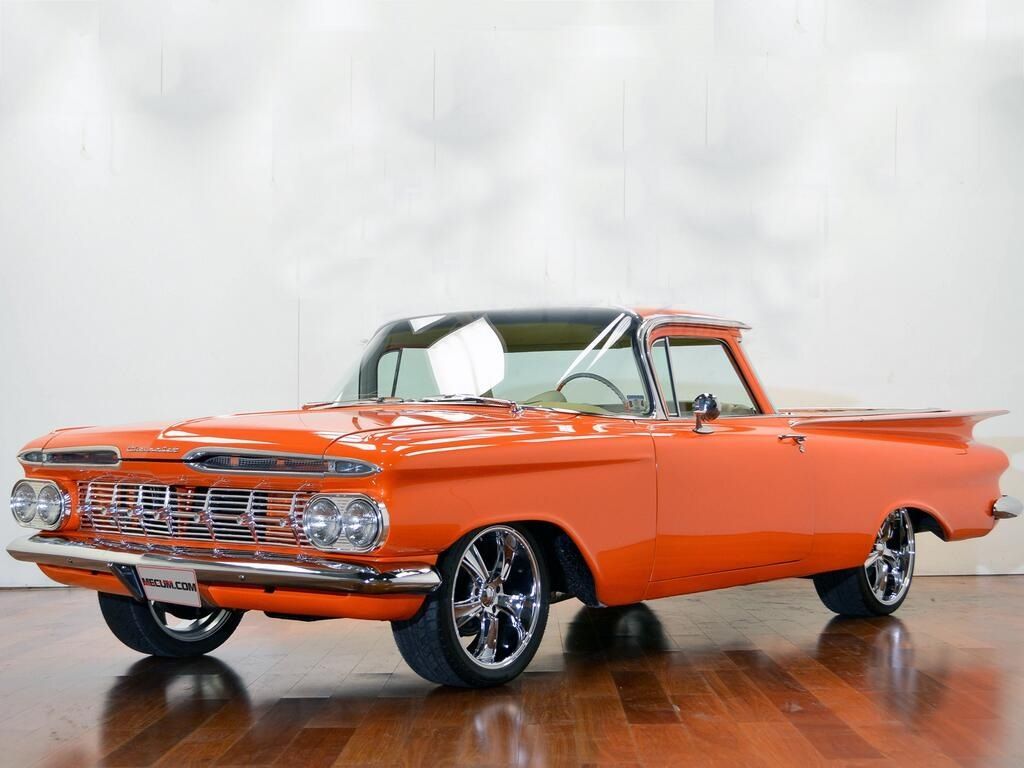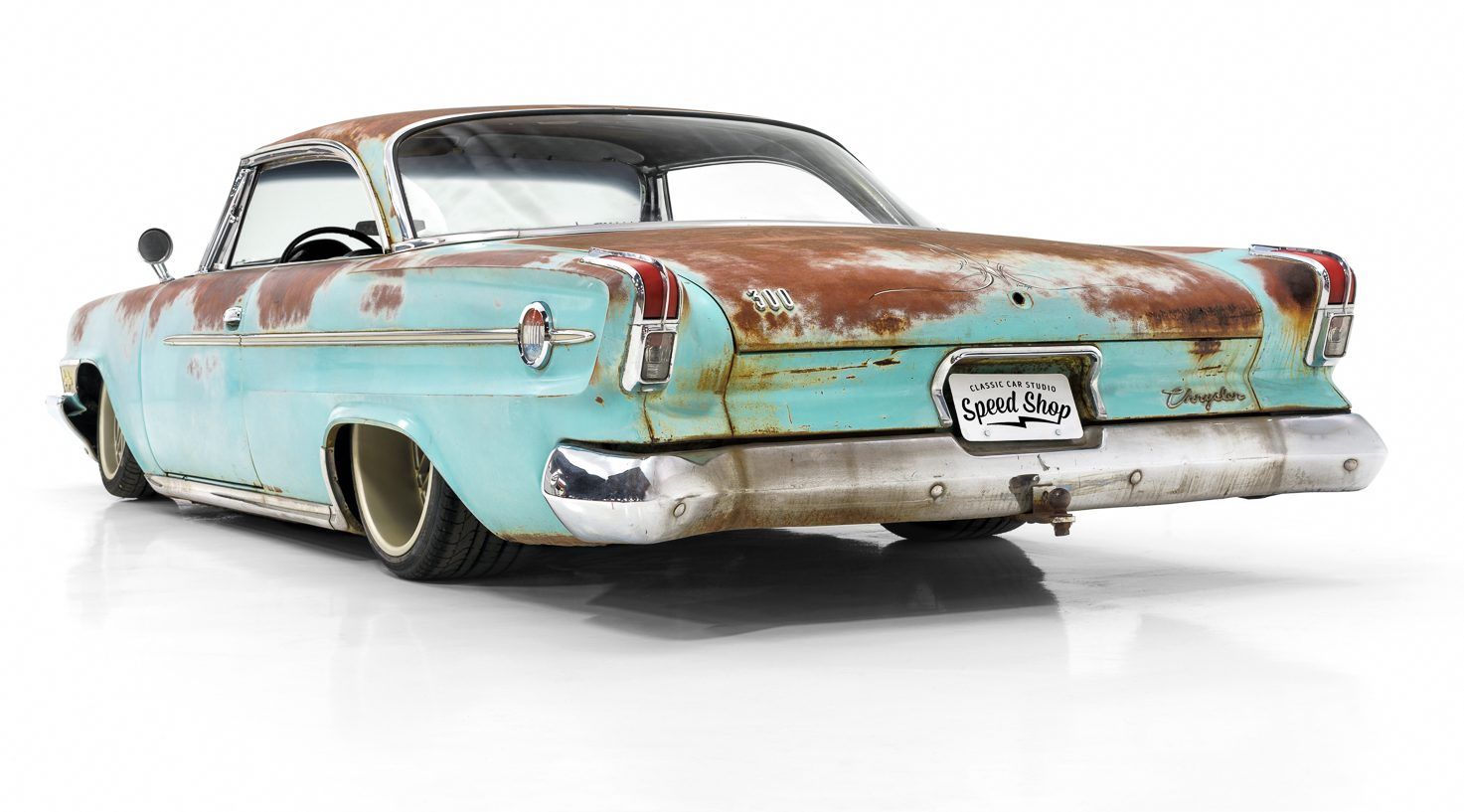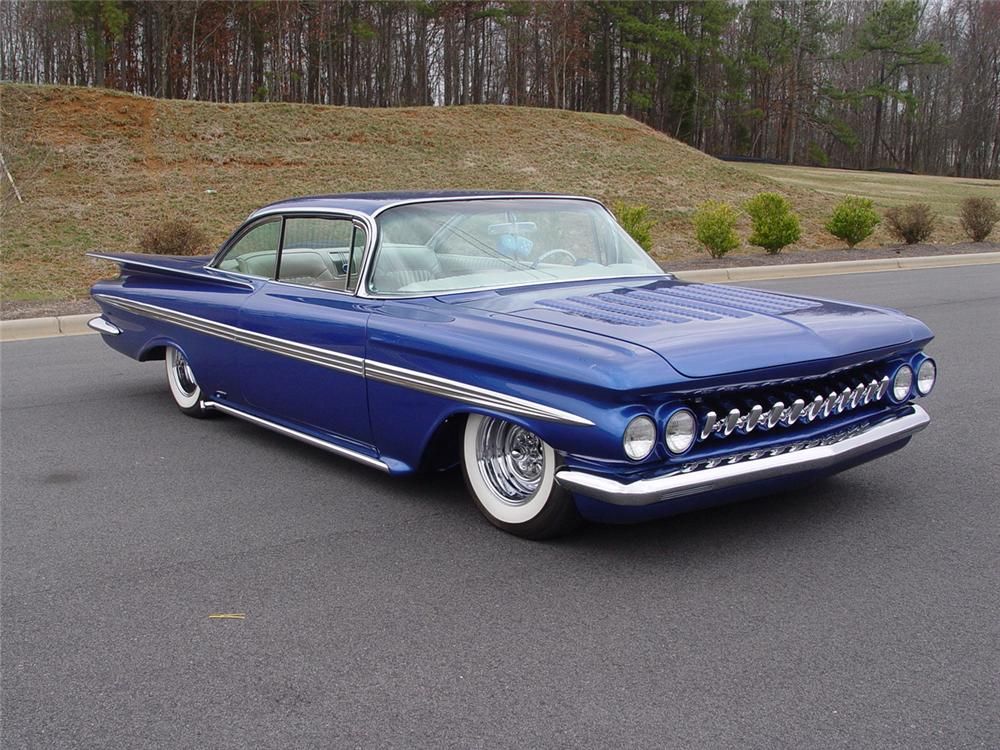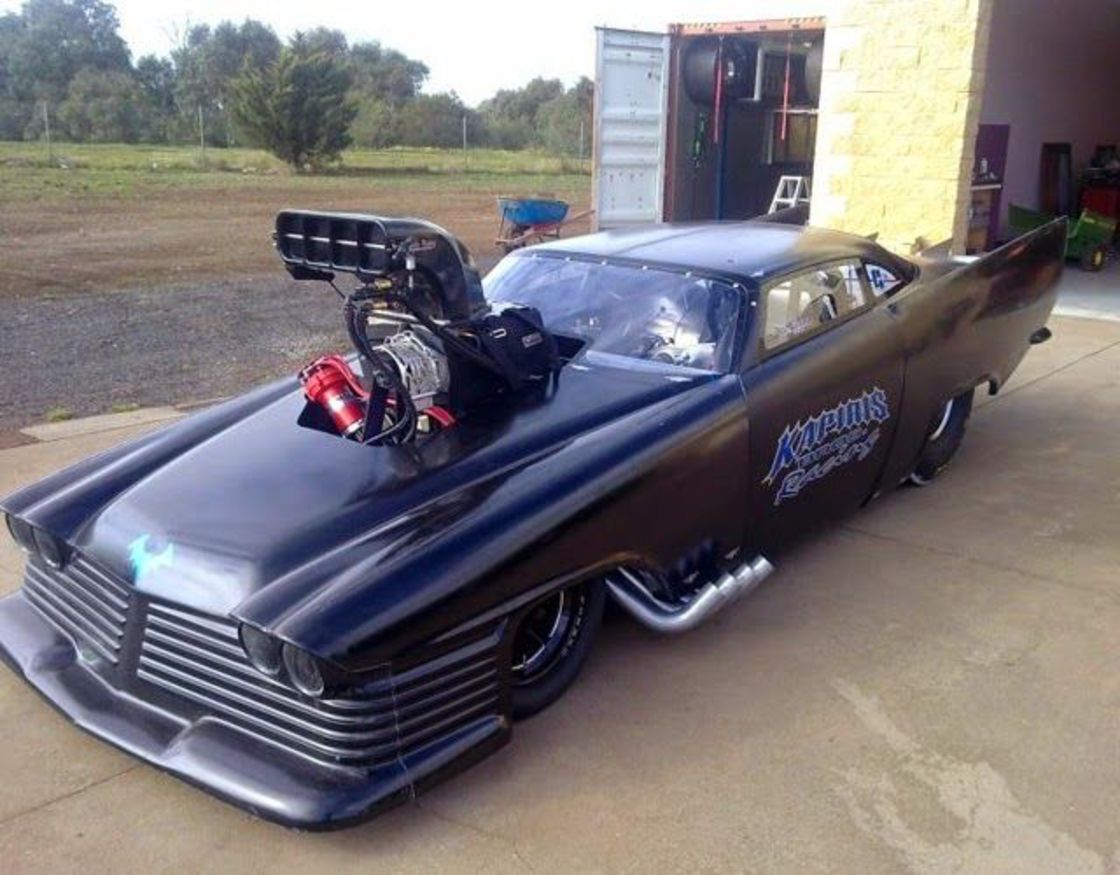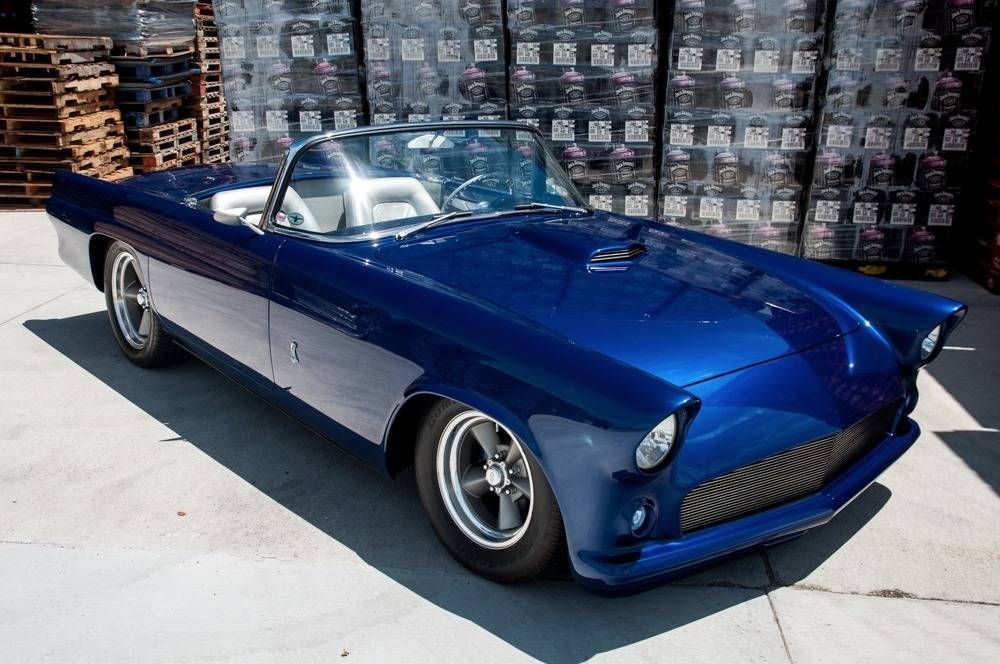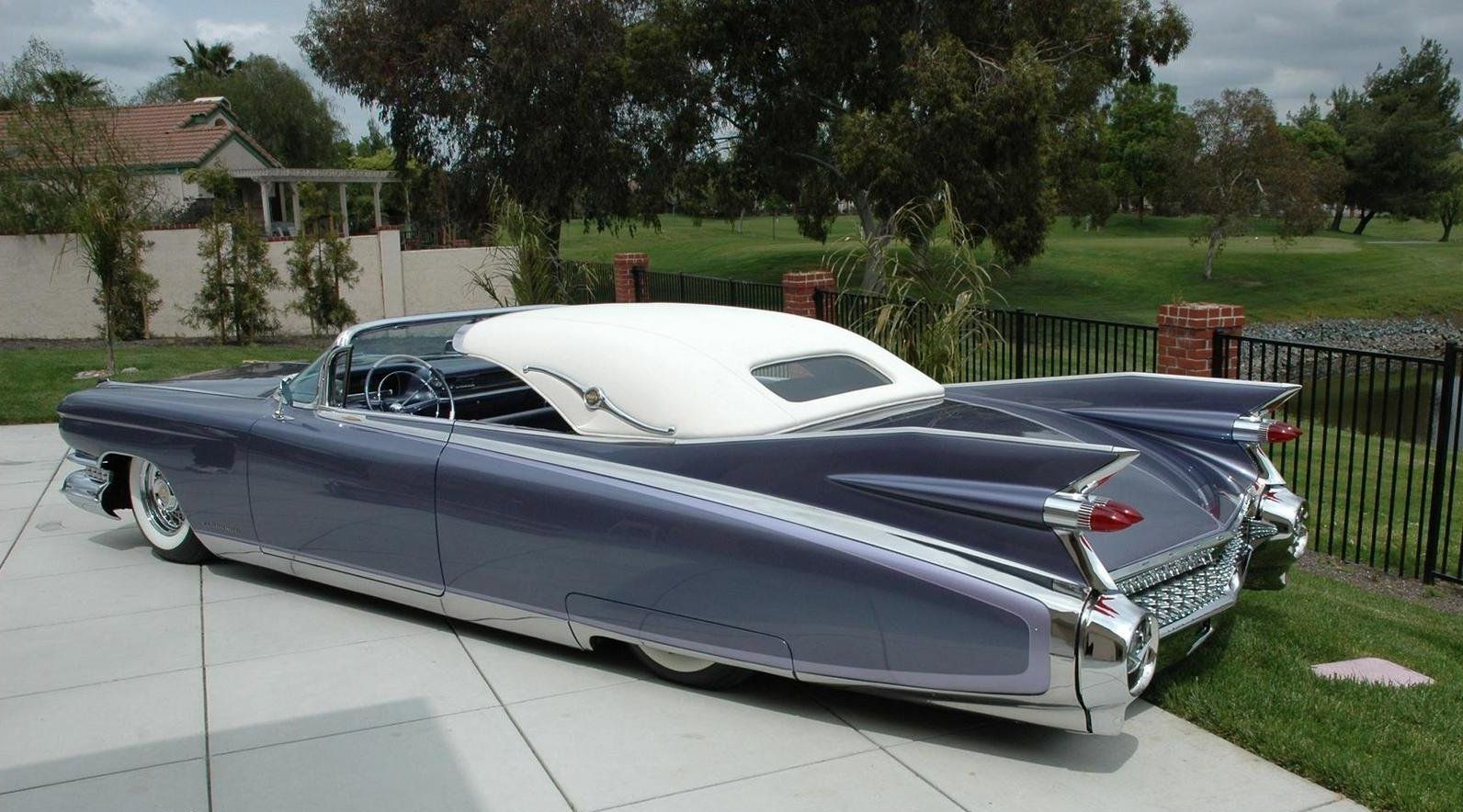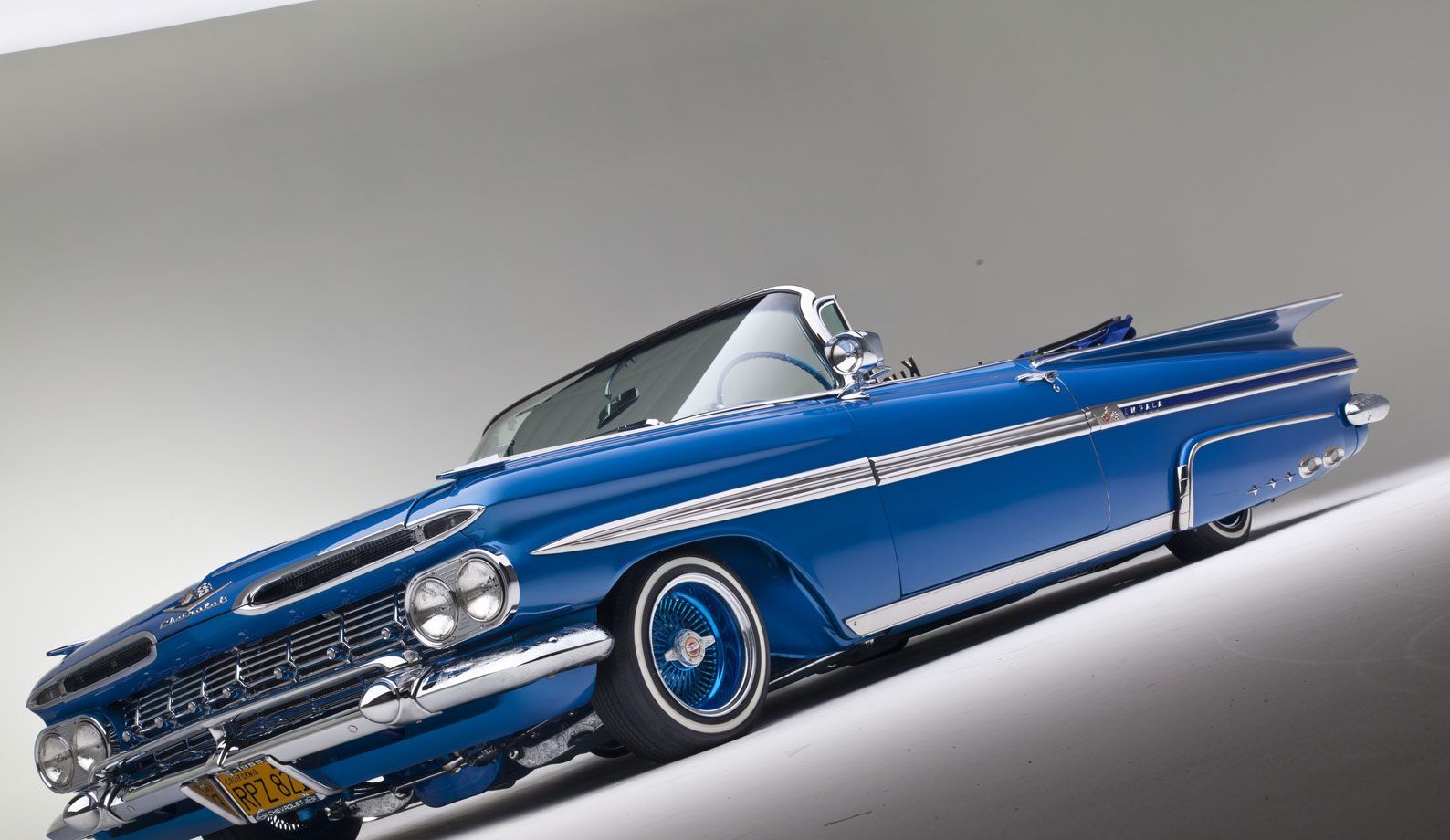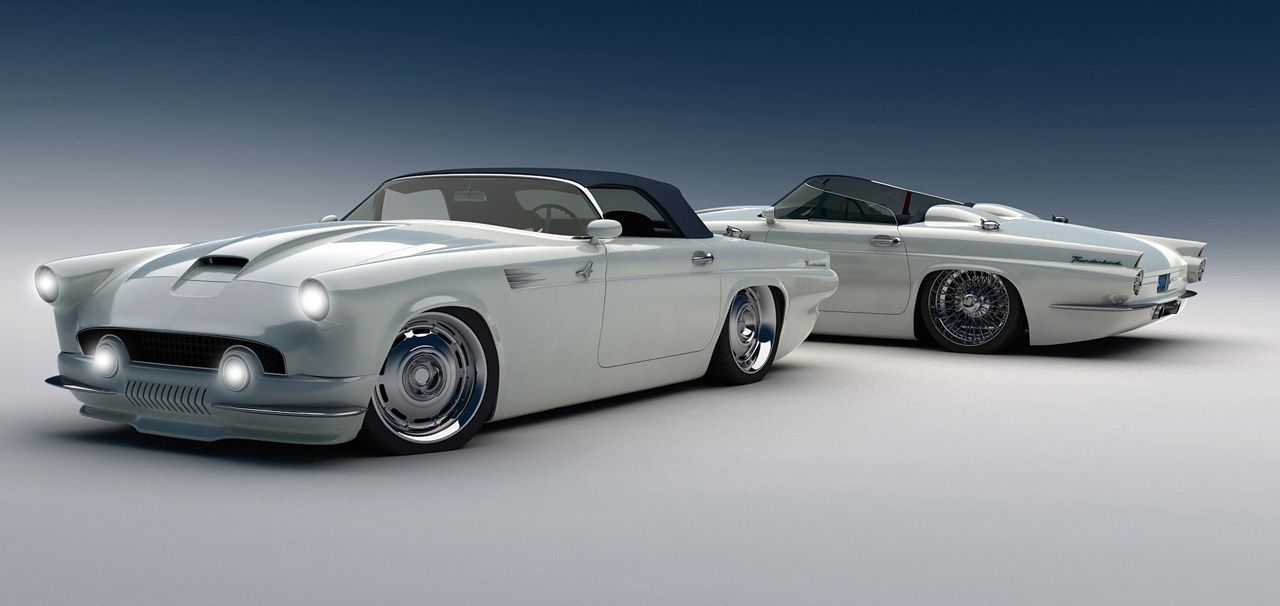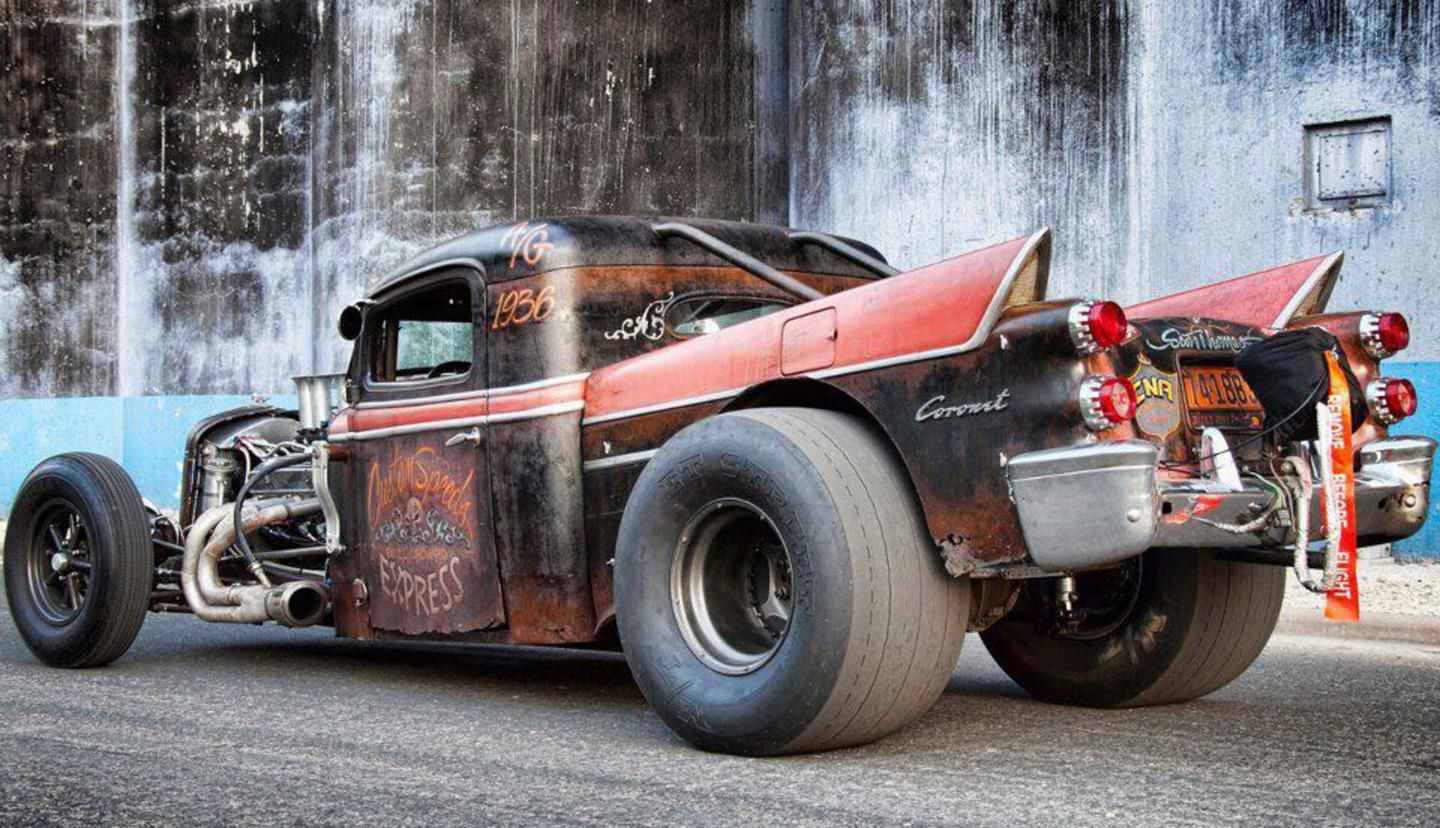"You are what you drive." Those of us who are forced by financial constraint to drive what we can afford rather than what we'd like, would probably take issue with that statement, but the truth is that we all judge others by outward appearances, including their clothes and their cars.
Automobiles, however, are a bit different from clothes. A car for most of us is a bigger financial investment than are our clothes – you don't much take out a loan agreement on a package of boxer shorts now do you? – and cars tend to last a good deal longer as well.
On the other hand, just as with clothes, automobiles are subject to cycles of fashionability and trendiness. What was au current in one era might be considered laughably out of date just a few years later.
That's how it was with tailfins. Though Harley Earl put one type of tailfin on the back of a Cadillac as early as 1948, they were in fashion in the US car industry mainly from about 1955 to 1962. Safety and efficiency regulation and requirements long ago put an end to such purely cosmetic automotive adornments. These days unless you spend a lot of time hailing cabs in Havana you're not likely to be seeing a lot of cars with much filligree on their rear ends.
So naturally tailfins are gone forever...or are they? Here are 20 mods that are doing their part to keep automobiles in 'fins.
20 1960 Cadillac El Dorado
Possibly the most iconic cars with tailfins ever made were the various models of Cadillac Eldorado produced from the late 1950s to the very early 1960s. To this day when most people think of "big American cars with tailfins" this is what comes to mind.
The Eldorados came in a couple of different flavors – mainly the Biarritz, the Seville and the top of the line Brougham trim. (Before being acquired by GM, Cadillac's highest level of finish came from their Fleetwood factory and that designation has continued to be a meaningful one in the marque's line.) So that would be, "Cadillac Fleetwood Eldorado Brougham/Biarritz/Seville." Imagine the size of quarter-panel needed just to print one of those names on it!
The stock engine was a 6.4L pushrod V8 that produced the 345hp/250+kW needed to move the thing down the road. By comparison, the Eldorado of that era was nearly 2ft/60cm longer and weighed about 30% more than today's Cadillac CTS.
The Biarritz convertibles are still highly prized as collector cars if for no other reason than that a few of the Brougham and Biarritz MYs were built in Italy by Pininfarina. They are also a favorite of modders and lowriders because their size and cultural significance give them instant impact. (Front grille-mounted skull optional, of course.)
19 1959 Plymouth Fury
One aspect to older model US autos that modders, hotrodders, and lowriders take full advantage of is those cars tendency to have long hoods. On this 1959 Plymouth Fury you can easily see why: lots of room to cut a hole.
The Plymouth Fury got its name – so the story goes – because the front fascia on the first models (ca. 1955) looked kinda pissed off. If you've ever seen a stock version of one, you know that's not completely outside the realm of possibility.
A bit later in that same decade, however, the car got over being an angry loner and joined the crowd; it too sported tailfins for 1959 and 1960 MYs. And that was about it for the Fury. Starting in 1961 the fins were tamed and its back deck sloped downward once again.
Plymouth as a brand was always aimed at suburbanites who were likely just starting a family; though it also made some definite contributions to the racing and performance markets. The marque was killed off at the very start of the Daimler-Chrysler partnership in 2001.
The front grille on the one in the photo has been stylized from the manner of the original 1959 model. The stock-, very old-fashioned looking cross-hatched chrome has been replaced with a very intimidating-looking stack of billet aluminum rails.
18 1959 Cadillac Hearse
One of the distinctive characteristics of the late 1950s Cadillacs was not simply the tailfins, but also the "dual-bullet" taillights which accompanied them on models such as this Coupe de Ville.
It was also true that because the cars were powerful and built with very large chassis they could be adapted to a lot of different "commercial" applications. That meant in the first instance ambulances – thanks to the room available for a modified interior – and, if things didn't go well at the hospital, hearses.
Cadillac ambulances and hearses had heavier duty chassis than the retail versions of the same vehicles. When it comes to modified drag racers, that provides greater capacity for the engines that are called for by the different competition classes.
Pro Mods like the one in the photo are required to at least resemble the street-legal version that their chassis started out as. The length of the car in that context is also an advantage because again, the nitrous injection system induction can be housed within but still protrude from the engine bay. The weight of the chassis also aids in just plain keeping the racer from becoming airborne.
And the fact that it is/was a funeral hearse just adds a bit of inspiration for whoever is responsible for painting it.
17 1958 Buick Caballero Estate Wagon
As a luxury marque, Cadillac was never much for offering family haulers like station wagons. Mostly it was concerned about catering to wealthy buyers of the executive stripe – management on their way downtown – and not to little league moms taking the team out for root beer after the game.
Instead, GM sought to fill the wagon segment with offerings from its more affordable lines. The Estate – inheritor from the early 1950s Buick Roadmaster – in particular was the go-to workhorse for a lot of suburban families for several generations.
Like the Thunderbird, the Estate wagon was on the bleeding edge of the tailfin trend; as early as 1956 it sported a modest pair of those – as did its sedan version brand mate, Century – one on each of its tailgate pillars.
Though wagons have fallen out of favor with many North American buyers over the last 30 years or so – crowded out for the most part by SUVs and the ever-popular pickup truck – as you'll see, that body style still appeals to modders and hotrodders. That may also be due to the high survivability of the wagons from that era that were also offered as commercial vehicles of one kind or another.
16 1957 Ford Fairlane
As automotive acorns, resto-mods tend to fall not too far from the relevant tree. By that standard this one is still more of a restoration than much modification.
But it still looks great partly because the Fairlane was born as a very fashion-forward coupe intended for a younger segment of the buying public. Like a few of the others on this list Fairlane came into being in 1955, just at the onset of both the rock 'n roll-, and the tailfin era. In keeping with Ford's historical tendency to keeping a conservative design ethic, however, it did not emerge from the womb with 'fins as part of its DNA.
It took until 1957 for the blue oval to catch the tailfin wave and even then the company never seemed to jump in with both feet. Both the Thunderbirds and this somewhat more affordable model – also the Custom 300 to come later – never quite developed along the lines of GM's tailfins, either in terms of ostentation or by size.
Though the Fairlane models from 1957 to 1960 – coincidentally the ones with tailfins – are still highly prized by collectors, the model mainly left its mark on the Detroit industry's history through a couple of related nameplates: Galaxie and Crown Victoria.
15 1957 Chrysler 300C
Though not heavily modified at all, we've included this Chrysler 300C to show off the difference that just a couple of years of competitive design could have in the industry.
The Chrysler 300 went through many incarnations in the first decade of its original production. And the nameplate has had at least two retirements since it was first released in 1955, including one in this century. But it was delightfully revived one last time during the Daimler years at Chrysler and the latest version is today a common sight on the streets of North America.
If Harley Earl had acted as the midwife for the birth of the tailfin era with his post-WWII designs at Cadillac, then Chrysler's Virgil Exner must be considered the loud blare of rock 'n roll that contributed to that same design cue's full-on delinquency a few years later. In fact, tailfins were one of the distinguishing characteristics for most of the 300 "letter-series" models taking them up to the 1962 model (see below).
Earl is said to have been inspired in the first instance by the onset of the "jet age" and the look of aeronautic design. But the tailfins that became more common as the era wore on could only be described as ornate badges of pointy goodness...if you like that sort of thing.
14 1959 Pontiac Bonneville
The 1959 Bonneville was the first of the Pontiac "wide trackin'" marketing and design efforts. The idea was to place the wheels wider out to the sides and thereby increase stability and cornering. It also likely increased the relevant ratio of sprung- to unsprung weight of the Pontiacs of that era. Fewer completely unsprung components increases downforce and, in turn, steering control.
If the look of the Bonneville reminds you of the Impala there's a reason for that of course: both of them were GM products aimed at roughly the same market segment and they shared the very long-lived GM B-body platform throughout the first two decades of their respective production runs. Over the four decades of its nameplate's existence, the Bonneville was Pontiac's full-size offering. The only thing that brought the Bonneville to and end was GM's decision to withdraw the Pontiac marque entirely.
As a brand, Pontiac never seemed to do much more than dip its toe into the tailfin waters. That which you see in the photo was about the entirety of that for GM's "excitement division."
The wide-track set up of the B-body Pontiacs is pretty adaptable for modification in general, but especially so for lowering as you can see in the photo.
13 1960 Oldsmobile Super 88 Convertible
Oldsmobile is another of GM's once great divisions that no longer exists. That's too bad because Olds and its "Rocket 88" engine were, in a lot of ways, responsible for the early history of stock racing and NASCAR.
Though Chrysler's Plymouth division and Chevrolet would soon come to dominate the Daytona 500, for example, the first of those premier races was won by Oldsmobile in 1959.
It had been the company founder and namesake, Ransom Olds, who famously helped to establish Daytona Beach as a hot bed of racing and automotive competition over a half century before the first official 500 was held. And the 88 nameplate first adorned a light weight sedan with an over-sized engine in 1950, one full decade before that first race.
By the time the 1960s rolled around the "light-weight" part of that early muscle car formula had been lost. The Olds 88s had become very large cars. By then the car was also using the GM B-body platform and sporting tailfins. And it continued to do so for longer than most; the last vestiges of those hanging on until the mid-1960s.
By the turn of this century the slender market segment that Olds had been hanging onto disappeared entirely and GM withdrew the marque entirely in 2004.
12 1957 Cadillac Coupe de Ville Hardtop
The Coupe de Ville, as a model line, was kind of the direct descendant of the original "Cadillac." Recall that back in the day most manufacturers at least started out making just one model. It would take nearly a half century of development in the industry for companies to start to diversify their offerings, and, naturally, for customers to start to let the manufacturers know what they were willing to pay for. Then GM was formed and the whole business was changed at least for the next 75 years.
So, when Harley Earl put airplane inspired tailfins on the 1948 Cadillac, it was pretty much the only car that marque produced; it was THE Cadillac for that MY. After joining GM, that line was kind of split into the two major lines of Cadillac: the de Villes and the Eldorados.
It is hard to say what separated the two after a fashion. In the first instance, however, it was simply that the de Villes were intended to be four-doors and the Eldorados two-doors. Of course, as you could see by the photo above, that distinction was not as clear might be imagined. In the end, it seems to have come down simply to what was emblazoned on the side of the particular car.
11 1956 Buick Special
If you've never read the story of William C. Durant and the birth of GM in the early 20th Century, then you're probably someone with a lot less free time than I am. But it's still a very interesting story. Durant lived the great American dream/tragedy, going from rags-to-riches-to-untold-riches and then all the way back to absolute rags once again. He was responsible for assembling General Motors corporation back in the early 20th Century and it all began with Buick.
The Buick Special was another one of those, "basically the one car the company started out building." In the case of the Buick marque, however, rather than becoming a part of GM's larger hierarchy, it was, like its brand, actually the cornerstone of that. The Special was the most affordable member of what became GM's luxury stable. It eventually was merged with the Century line, but not before it too spawned the Skylark.
If you don't know what the Skylark is, just imagine the 1970 Chevelle because it was that same car with a different badge. Yeah...that's a Skylark.
The Buicks of the 1950s were best known for their distinctive "ventiports" which indicate the size of their engine; since the Special had a 264 cu. in. engine (more than "2") it got three holes.
10 1957 Chevy Bel Air
Like the 1970 MY Chevelle and Buick Skylark GS, the Buick Special and Chevy Bel Air of the 1950s were somewhat competitive with one another (though not directly related). Chevrolet has always been GM's more affordable brand division and as a result in the case of both sets of sister vehicles, there are more of the Chevys still around.
Wider popular sales creates a demand for modification and performance upgrade parts in the short-term, and also for replacement and restoration parts in the longer term. If you've ever gone looking for parts for an water-cooled late-model VW Beetle versus an older model air-cooled one, then you know exactly what I'm talking about.
The tailfins on the Special and the Bel Air are again not nearly as elaborate as the Cadillacs of the same era, but they did adopt a distinctive chevron shape as did Chrysler's 300s. In a way, these mid-1950s 'fins are something of a return to Earl's inspiration for the first use of tailfins, but by the time these sharper tailfins began to appear, the aerodynamic concerns of the jet age were already giving way to those of the space age.
The Bel Air nameplate would be offered by Chevy for two decades eventually being replaced by the (new) Impala of the 1970s.
9 1959 El Camino
Pickup trucks have always been a real mainstay for the US auto industry. If you are unsure as to how important that segment is to the industry, a quick review of the panic that ensued when Ford recently lost production capacity of its F-series ought to suffice to make it clear. Trucks are big business.
Today the truck market is more like a bunch of fragments rather than a single segment. It's filled with lots and lots of "-UV" offerings. Included in that bunch are SUVs, MUVs, and XUVs...I think. It gets confusing. The important point is that the idea that vehicles might do more than one thing or – much more importantly from the perspective of marketing – be made to appeal to more than one group of consumers is not really new.
Born into the heat of the tailfin era, the Chevy El Camino was adapted from the Impala station wagon and so it inherited its parent's cat-eyed rear section. It is a classic of that genre and in a lot of ways it defined the multi-use segment. At times it could be "a (very) light-duty truck," at others it was just a handyman hauler, and at others it was a full-on muscle car.
8 1962 Chrysler 300c
Though you might think that you are just looking at an old, rusted out barn-find, this car is a bit more than that. It is a resto-mod that's taken the unusual step of keeping things "real" in a way. It is also of interest because the car shows the ebbing of the tailfin era.
Compare the back end on this Chrysler versus that one from just a few years earlier (above). It's definitely true that the higher, chevron shape is completely gone. You will also notice, however, that there are still creases in the sheet metal on this one as well as chrome finials. By the 1960 MY the Detroit makers and their customers had begun to lose their taste for tailfins. It was the beginning of the end for the somewhat short-lived design trend.
This car is distinctive, not just for its outward appearance, but it is said to also have a Dodge Viper V10 under the hood. By the time Chrysler stopped making the Viper, the engine had grown to 8.4L and produced 640 hp/480 kW. Considering that 300s of that earlier era could be fitted with a Dodge max wedge making 420 bhp/313 kW, that's likely still right up this car's alley.
7 1959 Chevy Impala Coupe
This car is notable for a couple of reasons. First, it is an Impala coupe that has had its front fascia and grille work completely modified from stock. The second reason is that those modifications show a lot of influence from what is usually done to hot rods of a different stripe entirely.
The Impala holds a unique spot in the history of tailfins because of the "bat wing" and "cat eye" form those gave it. Like the Cadillacs that it was related to, the Impala also had an expansive rear deck thanks to the orientation of its fins.
The grille on this car, however, refers to the "toothy" face that is generally more commonly associated with Desoto Firedome mods. If you ask most people to describe a hot rod, the toothy grin and rounded bottom (no tailfins) of a Desoto Firedome is one that you will probably get a lot of.
Desoto, however, also produced the Firelite during the tailfin era. That model was a direct competitor with cars like the 300, the Special, and the Coronet. And it resembled those as well, right down to the chevron-shapes on its backside. As all were Chrysler products, however, it was likely little surprise when Desoto's parent pulled the marque's plug in 1960.
6 1959 Chrysler Saratoga Batman Dragster
You're probably thinking that you saw this car earlier on this list, like maybe that second one down: that 1959 Plymouth, maybe? It turns out, you're half-right.
The Saratoga was part of the same Chrysler stable as the Fury. In fact, the Saratoga at one time was blessed with the Dodge Hemi as an engine option. The nameplate had a bit of a clouded marketing history otherwise. It was never completely clear where it fell in the overall corporate scheme.
It was launched during the war years (WWII) and was supposed to be the top of Chrysler's line at the time, topping both the Imperial and the New Yorker. After the war it shifted sideways in the corporate marketing plan and became the main brand's link to Desoto.
The 1959 model that is the basis of the dragster seen here, in fact, would have been something of a sister product to the Desoto Firedome of that same year. The grille here is a marked departure from stock that would have originally resembled the 300s we've seen earlier on this list. This new grille likely is better suited to the demands of racing.
The Saratoga eventually ended its run as a variation of the Chrysler Lebaron sold in the mid-1990s.
5 1955 Ford Thunderbird
This is the second Thunderbird mod, as promised. It features a nice looking suede blue paint job and a chain-mail, billet grille insert.
Ford's is a bit of unique bird in the history of the US auto industry: it was always conceived of as a two-seater roadster. Though Henry Ford's original Model S – predecessor to the Model T – was itself a two-seater, having been built on the "phaeton" model as were so many of its contemporary vehicles. Coach builders of that time were often asked to produce lightweight two seaters for use as what we now think of as "taxi cabs."
When auto builders went looking for something to apply the new power source of ICEs to, these kinds of coaches were available and affordable. They were also easier to get up to speed with common single-cylinder engines.
Henry Ford II, the inheritor of the company built by his grandfather's Model T, always had an eye for the more sophisticated markets of Europe. Through the 1920s and 30s, a big part of that market was made up by roadsters. When he took over after his own father, Edsel, died, Henry Ford II began dreaming of building such a vehicle himself. Though it took nearly a decade to complete that dream, the Thunderbird was the eventual result.
4 1959 Cadillac Seville
Here's another Cadillac, not as modified as the others we've seen, but sporting the distinctive fins and bullets nonetheless.
As noted earlier, part of the reason for the popularity of these cars as subjects for mods and low-riders is that they carry a lot cultural significance in the minds of viewers: they have instant impact.
The 1950s brought a lot of changes to most of the world. If nothing else, the relief of not being at war was still likely still lingering. More than that though, a lot of the resources that had been turned to the conduct of the world war, could now be returned to industrial and commercial purposes. The main result of which was hopefully making people's work easier and their lives better.
That meant making the things people needed or could make use of more affordable, but it also meant bringing them entertainment and giving them some measure of luxury. Cadillacs are associated with all of that because movie stars drove them, as did people of all walks who were then experiencing new wealth.
Best epitomized, perhaps, by Elvis Presley. Elvis famously gave a pink Fleetwood with Harley Earl's tailfins on it, to his mother in 1956. And the world was never the same again...
3 1959 Chevy Impala Convertible
The Impala has been one of Chevrolet's most enduring, popular, and best-selling nameplates for almost three-quarters of a century now. And that despite an on-again-off-again production history. In fact this year (2018) marks 70 years since Impala was first introduced in 1958. Who says septuagenarians can't be sexy?
For a long time Detroit manufacturers like GM would produce parts of different grades. Depending on how much a consumer paid for their automobile they could tell which grade of parts they were getting: Cadillacs had the best of GM and Buick, Chevrolet, Pontiac, and Oldsmobile were all a step down. Each of those divisions had a different identity in terms of how they were marketed, but basically they were on a par with each other in terms of quality.
During that time, Impala was everything but a Cadillac. That is, it was the top of the Chevy line and served as the marque's flagship platform. As you'll notice going down this list there were several variations on Impala. As a product it was born into the tailfin craze and so it's little surprise how good those looked the car in all of its incarnations.
In many ways, the long, broad flat deck of the first generation Impala was even better suited to tailfins than was the Eldorado or Cadillac Coupe DeVille.
2 1955 Thunderbird Lowrider
The Ford Thunderbird was marketed in the same manner as the Cadillac Biarrittz: a personal luxury car.
The concept for that segment, at least back in the 1950s, was of cars that a single person would really like to be seen driving around town. They had some performance pretensions, but not at the sacrifice of any kind of convenience or opulence. A lot of them were sold as convertibles.
The 1955 MY was the original Thunderbird and it is without doubt one of the Detroit industry's all-time classics. Though it helped to bring on the era of tailfins, its own were relatively understated. Starting with the 1959 MY the T-Bird was pumped up in overall size, but Ford did not choose to also enhance the fins. By then the trend had faded and the T-Bird itself also went into a bit of hibernation. It eventually was relegated to being the coupe version of the LTD and then completely discontinued in 1997.
The blue oval brought back a modern interpretation of the original body style for a brief run early in the new millennium (2002-05). But there might never again be another Thunderbird like the very first ones.
1 Mixed Rat Rod
Rat rods are pretty beautiful things if you're so inclined. They are generally created with an eye towards emphasizing the "rat" part. As a type of modification they have a long history that's well beyond the scope of this list. But this example is of particular interest because it incorporates the back end of a 1958 Dodge Coronet.
The Coronet is, like the Bel Air and the Special, a part of the storied history of US auto industry muscle cars. Back in the 1950s muscle cars were simply light-weight production vehicles with powerful engines. Though "muscle car" as a term nowadays conjures up an image of sleek, high-chromed, 1970s designs – unfettered by concerns with safety or fuel-efficiency – the first muscle cars were much more modest in appearance. The muscle cars of the 1970s were preceded in the 1950s by pointy-finned powerhouses that shared DNA with family cars. Those muscle cars were the first Bel Airs, Buick Specials, and Dodge Coronets.
And just as we can thank the Bel Air for keeping the performance heart of the Impala beating, and the Buick Special for helping to promote the Chevelle, we can also bless the Coronet for laying the groundwork for the Charger that would soon follow. Rat or not, thanks little fella.
Sources: amazon.com, cadillaccountryclub.com, motortrend.com

